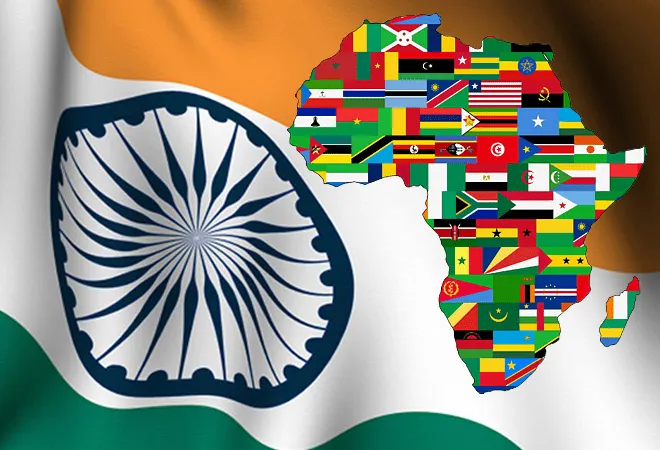Introduction
India and Africa are divided by the Indian Ocean geographically. Since ancient times, both nations have been connected by the monsoon winds, maritime links, trade relations, people-to-people contact and struggle against colonialism. The “Periplus of the Erythraean Sea” is a guidebook for sailors that highlights India’s historical connections with West Asia and Africa, specifically focusing on the Zenj Coast and Egypt. This Greco-Roman text, believed to have been written between the 1st and 3rd century BCE, provides insight into the natural convergence of India with these regions. The maritime trade links with the East African Coast initiated the migration of Indian traders into Central and South African regions. Post the commencement of the European Imperial era, Africa became a focus of contention and battleground for colonizers like the British, French and Portuguese. As a result, Africa witnessed the slave trade in the seventeenth century. These slaves were taken to Europe for the Industrial Revolution. The presence of these European powers in Africa led to the need for new opportunities, such as the need for skilled workers like masons, blacksmiths, and carpenters in colonies like Mauritius and Reunion which were being established by the French. Recognizing these opportunities, Indian traders in Africa brought skilled individuals from different regions of the West Coast of India to fill these roles. Later on, Indians began to settle down in East African regions, Mauritius and Reunion. Post the abolition of slavery in 1833 in Britain, bonded labourers were brought from India to Africa as a part of the indentured labour system to work on railway construction, and cotton and sugar plantations as well. Since then, the India- Africa partnership has evolved into multidimensional and comprehensive aspects.
CLICK HERE TO DOWNLOAD THE PAPER



Leave a Reply
You must belogged in to post a comment.